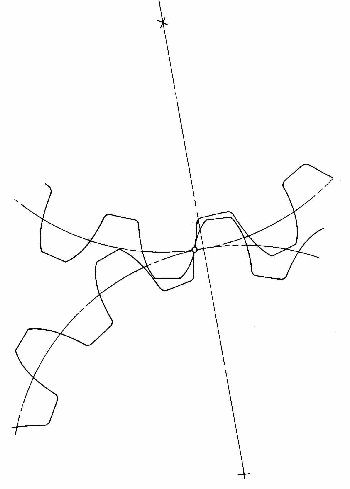Hidden Technologies
Today, we find some technologies that you don't see when you first look. The University of Houston's College of Engineering presents this series about the machines that make our civilization run, and the people whose ingenuity created them.
A laser or a VCR is an invention that's right out in the open where we can see it. We admire such devices, and we admire the people who made them. But have you ever thought how much ingenuity is hidden from view -- how much ingenuity we don't even realize is there?
For example, were you aware that gear teeth are far more than just wedges protruding from a wheel -- that their shapes have been mathematically contrived so that smooth, almost-flat surfaces push against one another without any sliding? Furthermore, gears are designed so the back of each tooth very nearly stays in contact with the mating tooth. That way the gear can be reversed without backlash. Some very complex human ingenuity has been used to avoid the sharp edges, sliding motion, and backlash that wear gears out.
Or consider the huge twelve-foot-long Swiss alpenhorn. Not many people realize that it's virtually the same instrument as the French horn in a modern orchestra -- that some ingenious musician realized it was possible to roll that great length of tubing into a compact coil without losing tone.
It's unlikely that you know what a complex mathematical shape an ordinary highway curve is if you're not trained as a civil engineer. These aren't simple arcs of a circle. They're made from two pieces of Archimedean spirals that start out straight, go to maximum curvature, and return to straight again.That way, you don't have to turn your steering wheel all at once. Furthermore, the highway is banked from flat to a maximum angle and back to flat again. The shape is very complex.
These examples go on. The sticky yellow paper squares you use to put a temporary note on a piece of paper came into being when an engineer at the 3M company invented a glue that didn't quite work. It wouldn't completely harden. Someone realized that those remarkably useful stick-on notes to make use of a glue that couldn't dry out.
An engineer doesn't have to build the Brooklyn Bridge or invent the radio to change the world. We encounter a thousand instances of dazzling ingenuity every day as we manipulate the machines around us. Creative expression is there among the anonymous parts of our machines as well as in the machines themselves.
I'm John Lienhard, at the University of Houston, where we'reinterested in the way inventive minds work.
(Theme music)
For the matter of highway design, see, e.g., Davis, R. E., and Foote, F. S., Surveying Theory and Practice (third ed.). New York: McGraw-Hill Book Co., 1940, Sections 526 through 528, Spiral Curves.
Gear design is treated in any mechanical engineering design text. See, e.g.: Shigley, J. E., and Uicker, J. J., Theory of Machines and Mechanisms. New York: McGraw-Hill Book Co., 1980, Chapter 7, Spur Gears.
Nayak, P. R., and Ketteringham, J. M., Breakthroughs: How the Vision and Drive of Innovators in Sixteen Companies Created Commercial Breakthroughs that Swept the World. New York: Rawson Associates, 1986, Chapter 3.
This episode has been rewritten as Episode 1293.

(Drawing by John Lienhard)
The Complex Shape of Modern Gear Teeth